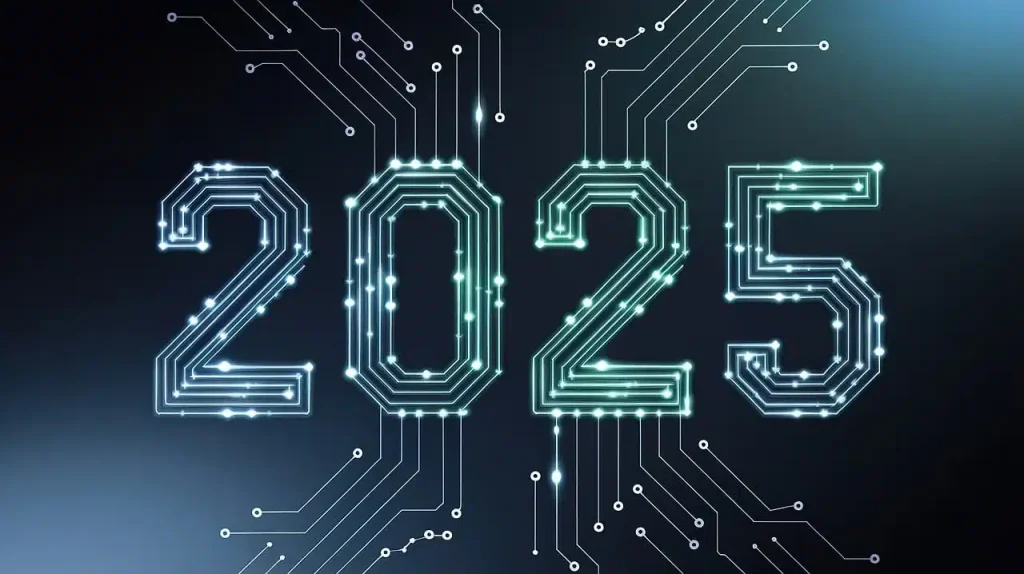
Did you know cybercrime could cost the world $10.5 trillion annually by 2025? It’s a staggering number and a wake-up call for businesses of all sizes. As cyber threats grow more sophisticated, staying ahead requires vigilance, innovation, and a proactive strategy. What will 2025 bring to the world of cybersecurity for businesses, and how can businesses prepare? Let’s dive into the trends and solutions shaping the digital security landscape.
Cybersecurity for businesses is no longer a back-office concern. Today, it is a fundamental part of how businesses operate. From protecting sensitive customer data to ensuring uninterrupted operations, cybersecurity affects everyone, from the CEO to the end user.
The risks? They’re multiplying. Cybercriminals use AI and automation to launch advanced attacks, such as phishing scams that look eerily authentic or malware that can bypass traditional defenses. And with the rise of IoT devices and remote work, the number of entry points for attacks has exploded.
Business Risks in 2025
For businesses, the stakes have never been higher. A single breach can lead to financial losses, regulatory fines, and irreparable damage to your brand. Let’s break down some of the major risks to watch for in 2025:
1. Supply Chain Attacks
Hackers target third-party vendors to infiltrate larger organizations. If your suppliers or partners lack robust cybersecurity, they can become the weak link in your chain.
2. Ransomware Evolution
Ransomware isn’t new, but it’s getting nastier. Attackers now demand payments not just to unlock systems but also to avoid leaking sensitive data.
3. Social Engineering Scams
Social engineering tactics, like phishing or smishing (SMS phishing), are becoming harder to detect. Could someone spy on you just by texting? It’s possible. Fraudsters can use links in messages to install spyware or harvest sensitive information.
Tools like reverse number lookup help individuals identify unknown contacts. If you’re curious, check spynger for more informaton. Businesses must go further by training employees to recognize suspicious communication.
Cybersecurity Meets Marketing
You might not associate cybersecurity with marketing, but these two areas are becoming increasingly intertwined. Why? Because customer trust is critical, and any data breach can erode it in seconds.
Protecting Customer Data
Modern digital marketing relies on collecting and analyzing data to create personalized campaigns. However, this wealth of data is a prime target for hackers. Businesses must implement strong encryption and compliance measures to protect this treasure trove of information.
Securing Marketing Tools
Marketers often use cloud-based platforms for email campaigns, social media management, and analytics. While convenient, these platforms can be vulnerable to attacks. Regular audits and multi-factor authentication can help keep your marketing tools secure.
Cybersecurity as a Marketing Strategy
Surprisingly, promoting your company’s robust security measures can become a selling point. Customers value businesses that prioritize their privacy. Highlighting your cybersecurity efforts in your marketing materials could give you a competitive edge.
Cybersecurity for Businesses: Trends to Watch
Cybersecurity for businesses in 2025 is being shaped by game-changing trends. AI-driven threat detection, zero trust architecture, and enhanced mobile security are at the forefront. As cybercriminals adopt advanced tactics, businesses must stay ahead by leveraging these technologies. Embracing these trends can mean the difference between resilience and vulnerability in an evolving threat landscape.
1. AI in Cybersecurity
Artificial intelligence isn’t just for attackers—it’s also a powerful defense tool. AI can detect and neutralize threats faster than traditional methods, analyze massive amounts of data, and predict vulnerabilities before they’re exploited.
2. Zero Trust Architecture
The “trust but verify” model is outdated. Businesses are moving toward a zero-trust approach, where every user, device, and application must continuously prove their legitimacy.
3. Biometric Security
Passwords alone are no longer enough. Expect to see more businesses adopt biometric security measures, such as facial recognition or fingerprint scanning, to authenticate users.
4. Legislation and Compliance
Data protection regulations, such as GDPR and CCPA, will continue to evolve, and businesses must stay ahead of these changes to avoid hefty fines.
How to Stay Ahead
It’s clear that the cybersecurity landscape is complex and ever-changing. So, how can businesses safeguard their operations in 2025?
Conduct Regular Risk Assessments
Understand your vulnerabilities by conducting regular audits of your systems and processes.
Invest in Employee Training
Your employees are your first line of defense. Equip them with the knowledge and tools to recognize and report potential threats.
Adopt Advanced Security Solutions
Traditional antivirus software won’t cut it anymore. Invest in next-gen solutions, such as endpoint detection and response (EDR) systems and AI-driven monitoring tools.
Partner with Experts
If you lack in-house expertise, consider working with a cybersecurity firm to ensure your defenses are up to par.
Conclusion
Cybersecurity for businesses is no longer an optional investment—it’s a fundamental requirement for businesses navigating an increasingly digital world. With cyber threats evolving rapidly, the year 2025 will bring new challenges and opportunities. Businesses must proactively address vulnerabilities, implement advanced security measures, and cultivate a culture of awareness to stay resilient.
The rise of supply chain attacks, sophisticated ransomware, and social engineering scams highlights the need for robust defenses. Emerging technologies like AI, zero trust architecture, and biometric security offer powerful tools to combat these threats. However, technology alone isn’t enough. Businesses must also invest in employee training, regular risk assessments, and partnerships with cybersecurity experts.
Marketing teams, too, play a critical role in this landscape. Protecting customer data and securing marketing platforms not only safeguards business operations but also builds trust—a vital asset in today’s competitive market. Cybersecurity for businesses has become more than just a defensive strategy; it’s now a value proposition that can differentiate your brand.
As businesses prepare for 2025, the focus should remain on adapting to the changing threat landscape. Cybersecurity is a journey, not a destination. By staying informed and implementing proactive measures, organizations can safeguard their future while fostering trust and innovation in an interconnected world.
Source: Read More




